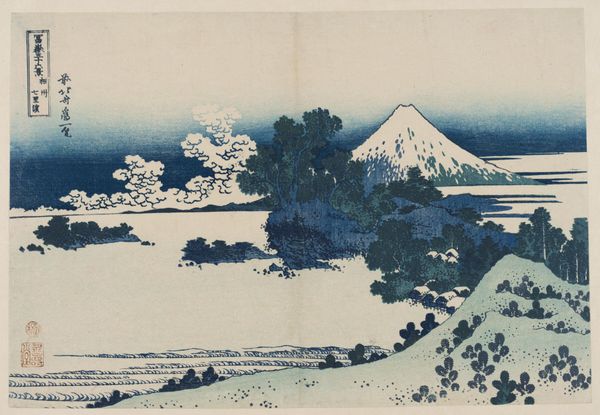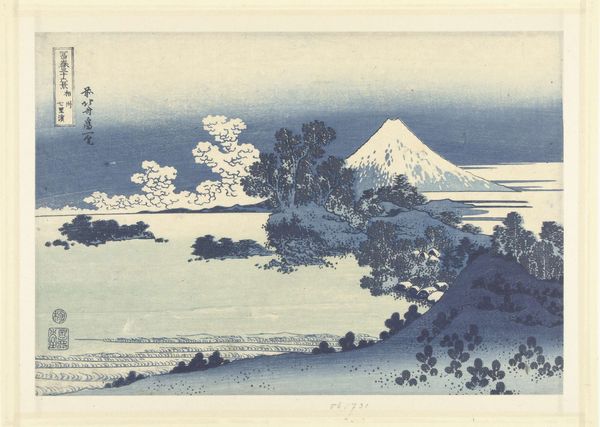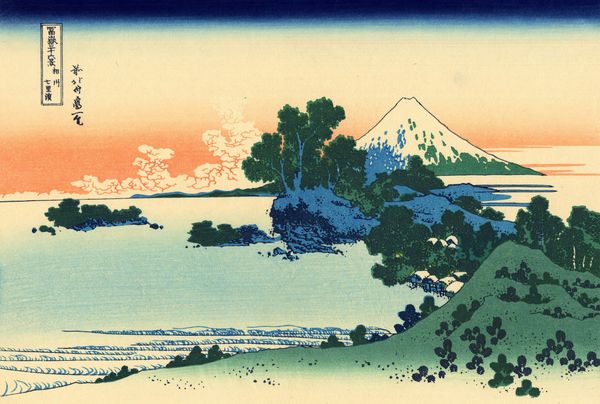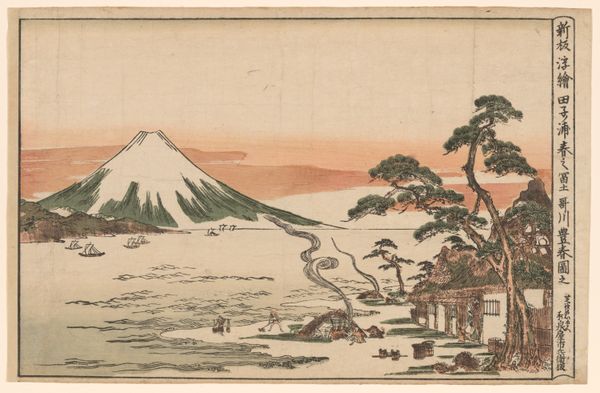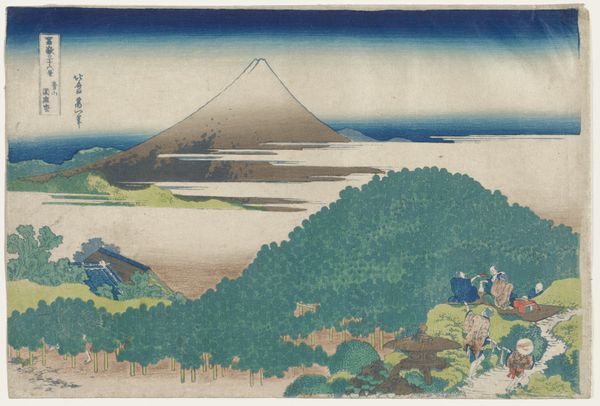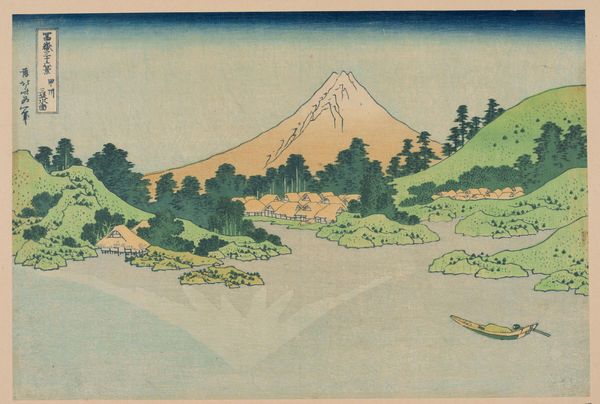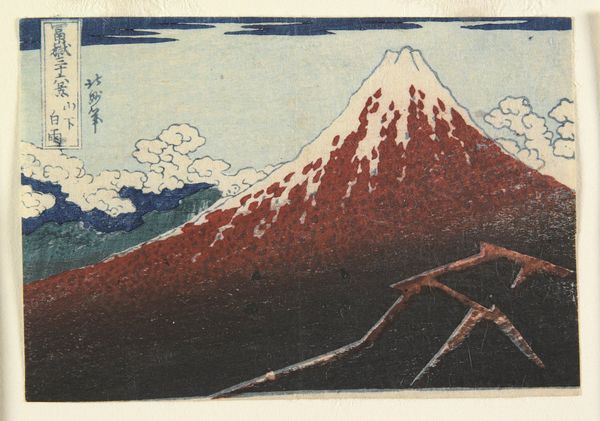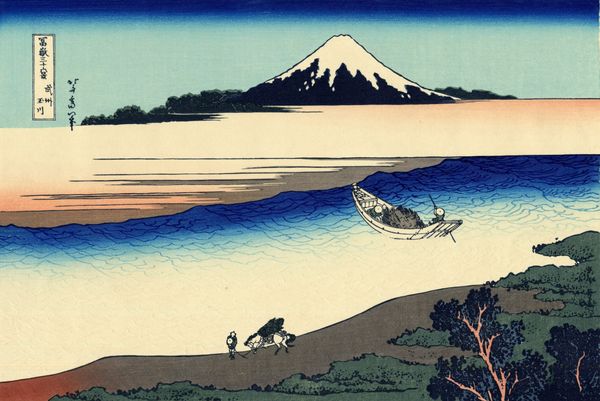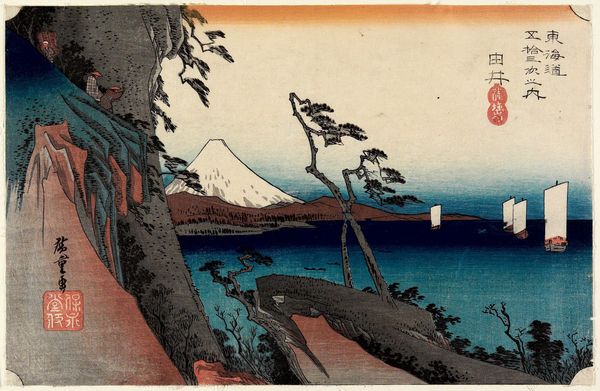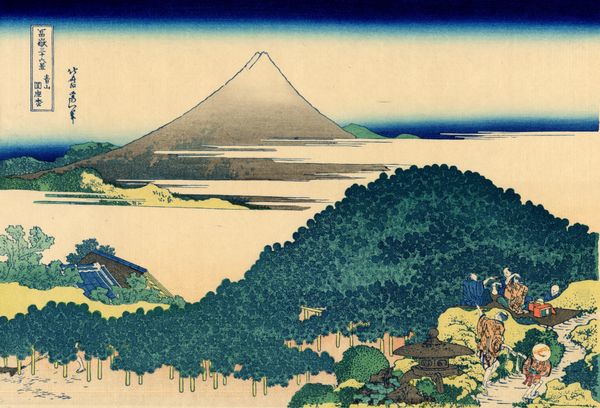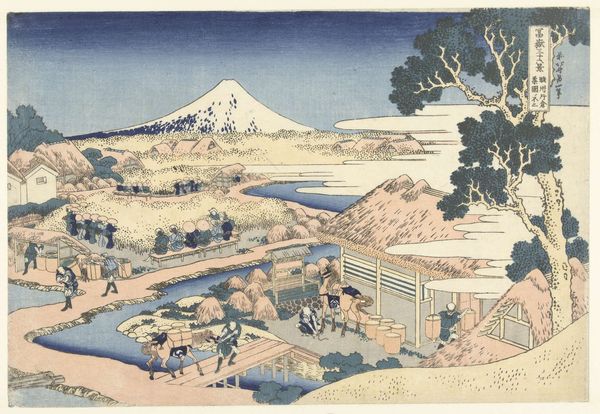
print, ink, woodblock-print
#
landscape illustration sketch
# print
#
asian-art
#
landscape
#
ukiyo-e
#
japan
#
personal sketchbook
#
ink
#
woodblock-print
#
geometric
#
orientalism
#
sketchbook drawing
Dimensions: 9 15/16 × 14 5/8 in. (25.3 × 37.1 cm) (image, sheet, horizontal ōban)
Copyright: Public Domain
Curator: Before us is “The Jewel River in Musashi Province,” a woodblock print created by Katsushika Hokusai around 1830-1833. It resides here at the Minneapolis Institute of Art. Editor: It’s stunning. The composition immediately draws you in—the powerful presence of Mount Fuji in the background contrasted with the tiny figures along the shoreline. It evokes a sense of the vastness of nature and the small role we play within it. Curator: Exactly! Hokusai was deeply interested in representing the common person’s relationship with the natural landscape, as well as how that relationship reflected the shifting socio-economic and political landscape of Edo-period Japan. Notice the emphasis on commerce—the figures, and what appear to be goods, hint at how daily lives and livelihood strategies are interwoven with broader systems. Editor: The texture is quite striking for a print, achieved, I imagine, through meticulous carving. It really captures the dynamism of the river, almost making you feel the motion of the waves. Considering the labor involved in creating the blocks and inks, and the craft of printing these… there is value in the work, and labor is not a trivial concept to understanding the ukiyo-e tradition of Hokusai's prints. Curator: Absolutely. Prints like these served a growing urban populace, reflecting not only the realities of their world but also shaping perceptions of it. The popularity of the ‘Thirty-Six Views of Mount Fuji’ series, to which this belongs, really illustrates the power of accessible art in shaping cultural identity. The commodification of images created demand for artworks of this type and brought social mobility for some. Editor: It makes you think about the social implications of printmaking as a medium; How affordable prints allowed more people to own and experience art— challenging the conventional perception of it as exclusively for the elite. The act of replicating the images allowed mass audiences and promoted ideas en masse. Curator: Indeed, and each print became its own little political and cultural ambassador. It's interesting to ponder its place now in a museum—taken out of that context of production and consumption— and given a new significance and authority. Editor: Seeing how the piece uses materials to achieve depth and convey narrative enriches its impact. We see the legacy of traditional methods intertwined with their social resonance. Curator: Reflecting on it all, it becomes clear that we're looking at a piece that encapsulates both the social and material history of a time. Editor: Right, a fascinating dance of labor, land, and legacy imprinted on paper.
Comments
No comments
Be the first to comment and join the conversation on the ultimate creative platform.


